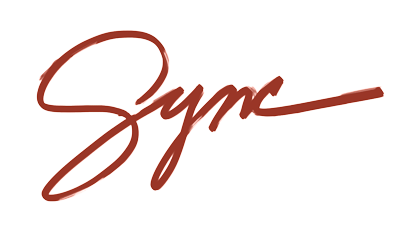
Becoming More Human: A Therapist Reflects on Life Outside the Session Room
Therapists are tasked with an unusual role in today’s world. We are keepers of confidential spaces: spaces of safety and trust, intended to explore the dark and private corners of a person’s world. Imagining a therapist beyond the confines of a session room or a laptop screen sparks a sense of implausibility. Do therapists actually go outside?
It’s true! Therapists can be spotted outside of the office! For this therapist, there is a fair chance of an encounter with a client beyond the session room because I live where I work. And where I live and work is a very small world. For scale, in a county of over 9 million people, my city has a population of 11,000 residents living within only 3 square miles.
What all this means to me personally is that if a client sees me at work, they’ll likely see me outside of work, too. My neighborhood boasts three coffee shops, two parks, one amazing sushi spot, and a limited number of places to hide.
Which begs the question: why would I want to hide?
This is a question I sit with a lot. On the one hand, there’s no harm in knowing your therapist goes for short walks around the block in her worn out sweatpants and dirty baseball cap. Maybe there’s something important to be gained in the therapeutic relationship with a little transparency on the part of the therapist. But on the other hand, knowing your therapist isn’t a frequent part of your life may allow for needed mental and emotional compartmentalization. Perhaps a client doesn’t want to imagine or know much about their therapist outside of the safe context of their therapy work together. Keeping that divide might help a client feel more contained, and secure. A secure attachment is a high priority for good therapists as they seek to provide safety and containment for their clients, so the boundary questions here are valid and important ones.
The balance is delicate, but I know I don’t want to be afraid to be seen by my clients outside of session. I want to feel at ease with the idea that we live large lives encompassing many roles. Yes, as a therapist, and also as a partner, an artist, a caregiver, or a friend. To this end, during a client’s initial session I typically open up a conversation about the possibility of a chance encounter around town, outside of our sessions. I say something along these lines: “We may spot each other while standing in line for groceries, going to the movies, riding the train, who knows! I want you to know at the start of our relationship that the ball is in your court in terms of greeting each other. I’d love to say hello, but I’ll wait for you to initiate in case for any reason a greeting doesn’t feel quite right.”
I like this approach, for the most part. But sometimes I wish for more. Sometimes I wish I could offer a friendly hello as an acknowledgment of my client’s presence, albeit in a different context than we’re used to. A warm greeting would be my preference and a match for my comfort level, in most cases.
Ultimately, what I believe makes psychotherapy a uniquely healing experience is centered in the human-to-human component, not the human-to-professional one. And for me, being a living, breathing human existing in my community is at the heart of my desire to be myself when I encounter clients who are also members of the same community: person-to-person, not just client-to-therapist.
I’ve lived and worked in Sierra Madre since the early days of the pandemic. This is a place I care about deeply alongside the care I hold for clients in my practice. I want to become more of myself in the place that I inhabit and the work that I do. The next time I meet with a new client, I may try saying something like this instead: “We might see each other outside the session room. It comes naturally to me to wave or say hello, but I want to respect what feels useful for you as we develop this relationship. What’s your preference, from one human to another?”
